93 Search Results for mini schedule
November 29, 2012
by Robin Parker -
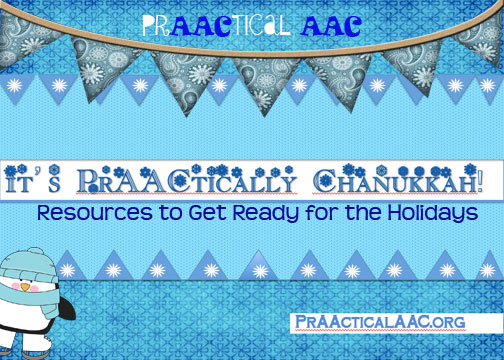
Chanukkah is prAACtically here, even though it seems very early. Chanukkah starts at sundown on December 8th and ends at sundown on December 18th. Holidays are usually fun and busy. With all the fun comes changes in routines, less sleep, more stress, more excitement, more people, more compromise, and overall different expectations. This is a time to plan in advance the visual supports, visual systems, and AAC displays that will help everyone understand, organize, and communicate most optimally. Check out these great resources to help with the planning: Friendship Circle Blog- Preparing for Hanukkah, 15 Tips to Make Sure Your Child is Ready for The Holidays, & More Gateways Program Resources- There are visual supports for the Chanukkah Blessings. There are social story books that help with understanding that birthday candles and Chanukkah candles are different, that Chanukkah candles go out by themselves, and about Chanukkah candles and fire safety.... [Read More...]
November 20, 2012
by Robin Parker -
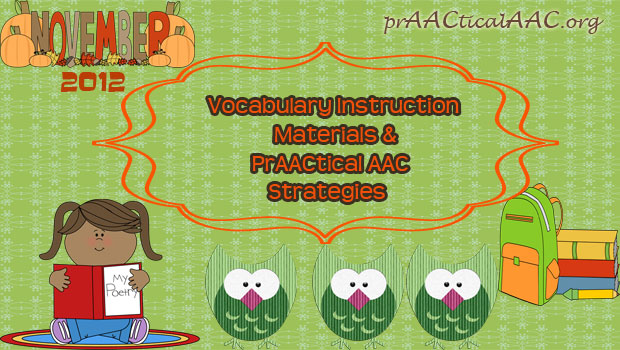
We are super big fans of Teachers Pay Teachers (TPT). We need the PrAACtical resources that TPT offers. In addition to paying ridiculously low prices for some great teaching materials and cool classroom resources, there are also many free options. Check out these free vocabulary resources and have lots of fun. As always, the materials are only as good as the teaching strategies that go with them. As we check out these awesome vocabulary resources, we will use the following guiding principles and we will create appropriate communication opportunities for ALL learners to participate in direct vocabulary instruction. Active Participation for Everyone– Make sure all learners can make choices within the activity, respond to questions, add information, request clarification, and even ask for a break if they need it. To do this we will need one hit message devices, visual supports, individual and group communication displays, choice boards, switches, etc.... [Read More...]
November 10, 2012
by Robin Parker -
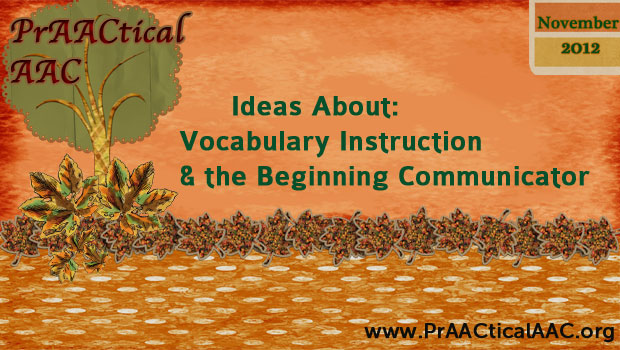
Vocabulary instruction is a topic not often discussed for beginning communicators. As we work with beginning communicators the primary focus is often vocabulary selection for communication displays. This is understandable as the beginning communicator has many needs, but that is no excuse for leaving out vocabulary instruction. Direct vocabulary instruction helps expand broader vocabulary selection options, literacy skills, and world knowledge. With that in mind, see below for vocabulary instruction philosophies, notes, and activities for the beginning communicator. Please let us know about your favorite vocabulary instruction activities. Vocabulary Instruction for the Beginning Communicator: 5 Philosophies Vocabulary instruction involves a systematic TEACHING process. Add vocabulary as an activity on the daily schedule and then have a mini-schedule for the specific vocabulary instruction activities for that day. Carole introduced general steps for vocabulary instruction last week. For the beginning communicator, also apply an errorless learning paradigm. Gradually, add comprehension checks, but... [Read More...]
October 9, 2012
by Carole Zangari -
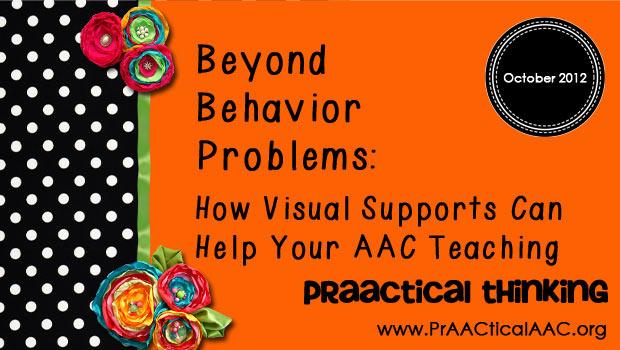
Visual supports are not just for people with behavioral challenges. In this post, we share some ideas of using visual schedules and other supports to enhance comprehension and language learning. Let’s look put this into a clinical context. Marvin is a high school student with intellectual disabilities and cerebral palsy who is learning to use a high tech SGD. He is a personable young man who engages easily and comes to each session with a ‘ready to learn’ mindset. Most of Marvin’s goals revolve on learning to build sentences using core words. Although he has very limited literacy skills, he really, really wants to learn word prediction. This presented a bit of a dilemma, as I typically don’t begin to teach word prediction until spelling skills are approaching the third grade level. Marvin has some terrific splinter skills but his overall spelling skills are probably around the mid-first grade level.... [Read More...]
July 7, 2012
by Carole Zangari -
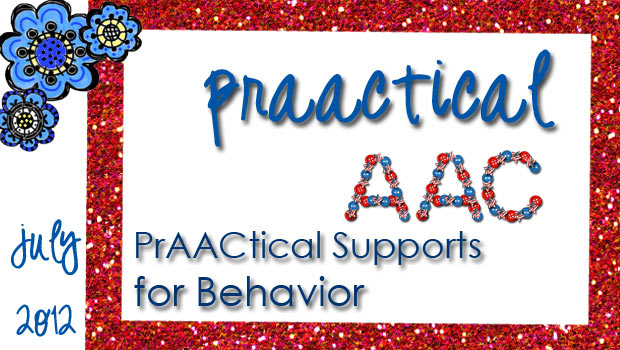
Rachel arrives to therapy tense and upset. Mauro gets frustrated when the clinician presents new activities. Brianna starts to bang the table when demands are placed on her. Zach becomes agitated when he has to wait for something he wants. – Like any set of tools and strategies, AAC works best when the communicator is relaxed, confident, and engaged. Our July Strategy of the Month focuses on PrAACtical Supports for Behavior. We hope to share ideas for planning therapy sessions that help AAC learners stay focused, calm, and engaged. — We’re big believers in the old adage that an ounce of prevention is worth a pound of cure. So, what can we do to prevent or minimize problems like the ones experienced by Rachel, Mauro, Brianna, and Zach? The answers have to do with having clear and appropriate expectations, and using visual and AAC supports effectively. When used consistently, these strategies... [Read More...]
July 2, 2012
by Carole Zangari -
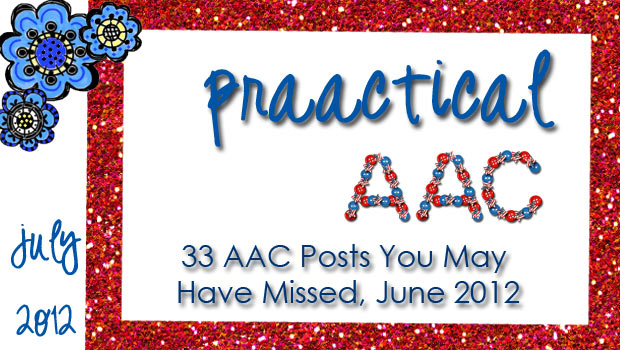
The Fives PrAACtical Suggestions: 5 Ways to Elicit Language Without Asking a Direct Question 5 Tools to Make Aided Language Input Easier “Call Me Later:” 5 Supports for Phone Communication by People Who Use AAC Safety Matters: 5 Resources for People Who Use AAC – PrAACtical Thinking 72 Free and Lite Versions of AAC Apps AAC App Giveaway: It’s a PrAACtical Celebration 7 Apps for Adolescents with Special Needs “Not Dumb Now” (And Actually, Never Was) Pivotal Skills for AAC Intervention: Aided Language Input Before It’s Too Late: A PrAACtical Resource for Emergency Situations PrAACtical Tips for Passing the SLP PRAXIS on the First Try, Part 1 PrAACtical Resources: Making Sense of Picture Symbol Options PrAACtice Fire Safety 25 Under 5: AAC Apps PrAACtical Intervention Ideas: AAC Learning with the Toys, Websites, and Apps You Love PrAACtical Reflections on Father’s Day Introducing RELAAACs: Rubric for Evaluating the Language of Apps... [Read More...]
June 24, 2012
by Carole Zangari -
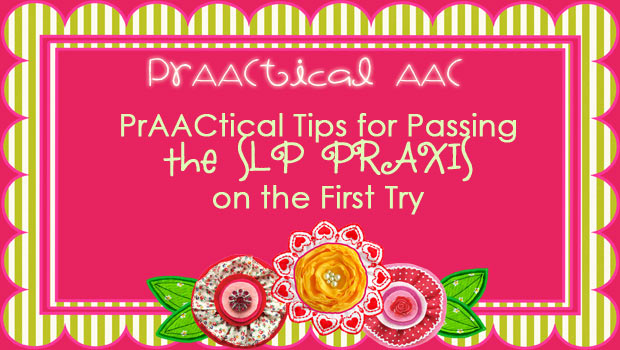
In today’s post, we’re taking a big detour. For the next few weeks, some of our Sunday posts will deviate a bit from the world of AAC, AT, and disability and plunge into the world of the graduate student SLP. Every job has ‘other duties as assigned’ and part of mine involves helping our graduate students get ready for the SLP PRAXIS exam. At our university, we’ve had a structured review class offered online for almost 10 years and I’ve had the pleasure of being involved with that during its evolution. I frequently get requests from students at other universities to take the class, which we can’t accommodate, and it finally (!) occurred to me to write a blog post with some tips and suggestions. The result is this 3-part series. So…Let’s get this party started! –– Before You Start to Study – 1. Learn about the SLP PRAXIS exam... [Read More...]
May 24, 2012
by Robin Parker -
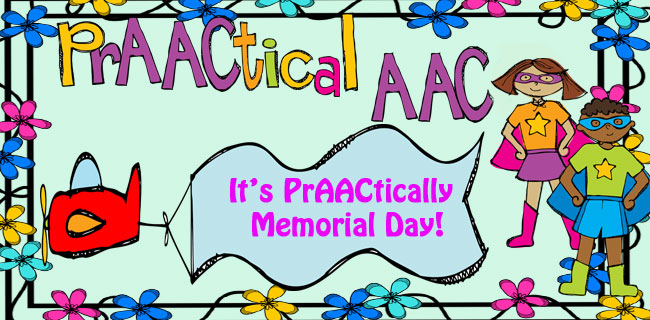
Memorial Day Weekend is big for us. We remember, appreciate, and honor the people who have protected our freedoms. We both have annual relaxing weekends planned. As we started to get ready, though, we started looking for Memorial Day AAC materials. It was surprising to see that there was not much to be found. We found some gluten-casein free Memorial Day recipes, which are great, but what about symbols to go with the recipes or symbols to explain the holiday and what about AAC language activities for the typical long weekend or trip? Not much…. So as we began preparing for our own weekends, these are some of the things we have done or are doing for PrAACtical AAC at home and on our mini-vacations: – Before We Leave Create a personal participation story (modified social story) so ALL the children can SEE the language for the trip. Here’s something that... [Read More...]
May 1, 2012
by Carole Zangari -
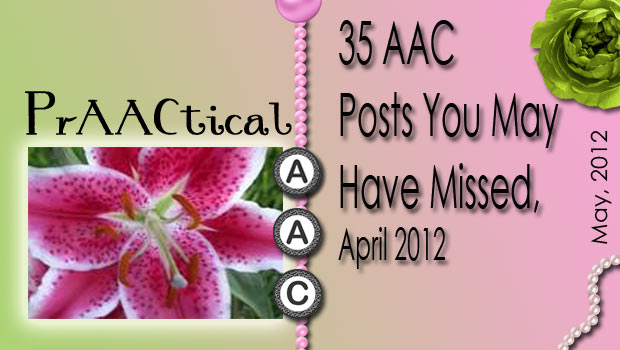
— – – Strategy of the Month From Disney Princesses to Houseplants: More on Building Communication Opportunities 5 Apps for Tempting Commenting and Other Language Functions Go Ape! 10 Commenting Communication Temptations PrAACtical Play: Creating Communication Opportunities with Favorite Toys How to Make Communication Temptations Really Work Mining Preschool Routines for PrAACtical AAC Opportunities. Meaningful Communication Opportunities – The Fives 5 ‘Go-To’ Sites for AAC and Visual Support Downloads 5 Apps for Tempting Commenting and Other Language Functions 5 AAC-Related Facebook Pages/Groups We Love 5 Tools and Tips for Making Transitions Easier 5+ Sites for Free AAC-Friendly Literacy Resources 5 eGames for Switch Users 5 AAC/AT YouTube Channels We Love – PrAACtical Thinking 49 Free or Lite Versions of AAC Apps A Myth About Visual Schedules Lives On PrAACtical Resources: Making Decisions about Reading Accessibility Options PrAACtical Resources: Toolkit for ASD PrAACtical Questions: How Do I Find Good AAC Service... [Read More...]
April 28, 2012
by Carole Zangari -
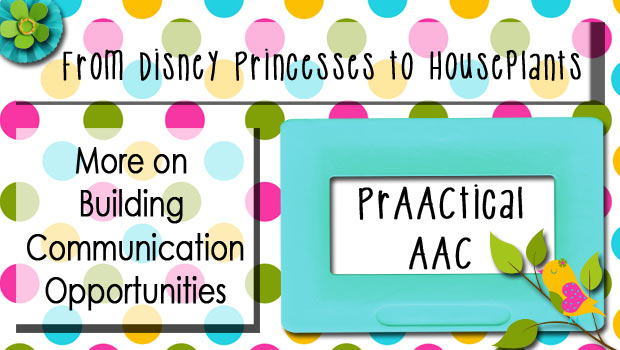
Mining everyday routines at home, in school, and in therapy sessions for communication teaching opportunities is a great way to get started in boosting the effectiveness of AAC intervention. We are inspired when we see clinicians enhance their clients’ learning by making subtle, but important changes. – I was thrilled to hear one SLP talk about how she ‘found’ more AAC practice for a teenager by offering more choices in her therapy games. Once he chose a TV character for the activity, LeVon then had to specify what action he/she would do (e.g., dance, drive, clap) and a location in which to do it (e.g., home, school, beach). Agent, action, location. Hmm…sounds like a good start for sentence-building, with a little aided language input and expansion thrown in for good measure. “Quinn drive beach.” “Yes. Quinn drove to the beach in his truck.” And it gives us great pleasure to... [Read More...]









